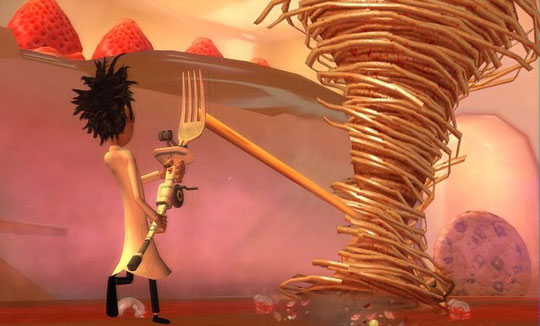MPEGIF Completes 21-Page 3DTV Glossary

LOS ANGELES: 3DTV is all the rage, but there’s more loose ends than a spaghetti tornado, from industry standards right down to the terms used to describe video quality or lack thereof. The MPEG Industry Forum in cooperation with the 3D@Home Consortium is proffering to plug that last hole with a new 21-page glossary of 3D video-quality terms. Sean McCarthy, Ph.D. of Motorola is chairman of the MPEGIF 3D Working Group that came up with the glossary. Television Broadcast first reported on the effort last month. (See “MPEGIF Group to Issue 3DTV ‘Vocabulary.’)
Terms such as “artifact’ and “macro-blocking’ grew out of the migration to high-definition TV, but those terms weren’t adequate for describing video anomalies in 3DTV.
The “Glossary for Video & Perceptual Quality of Stereoscopic Video” includes some basic entries, such as “aberration,” defined as “an imperfect image formed by an optical system.” More specific to the format, there’s “accommodation,” or what happens to the shape of the eye to focus on objects at different distances. “Convergence” occurs when eyes focus on a single point. Both are dependent on depth cues. “Accommodation-convergence rivalry” is what occurs when those depth cues are off, which occurs with some frequency in 3DTV.
“Brain Shear” is attributed to James Cameron, director of “Avatar:” “The brain’s inability to reconcile the images received by the left and right eyes into a coherent stereo image, which causes it to send corrective messages to the eye muscles, which try to compensate but can't fix the problems baked into the image on the screen, creating an uncomfortable feedback loop and physical fatigue of eye muscles, which causes the eye muscles to scream atthe brain, at which point the brain decides to fuse the image the hard way, internally, which may take several seconds or not be possible at all-- all of which leads to headache and sometimes nausea."
A “dirty window artifact” describes a motion-compression artifact in which parts of the image don’t move smoothly.
“Keystone distortion” is when the film plane in a camera or projector is not parallel to the view or the screen.
“Twist” is rotational displacement of one of the two stereoscopic views.
The intent of developing a vocabulary for 3DTV video quality and effects is simply to get everyone on the same page with regard to observations and experience.
Television Broadcast will publish the full document when the final copy is approved.
-- Deborah D. McAdams
The professional video industry's #1 source for news, trends and product and tech information. Sign up below.
